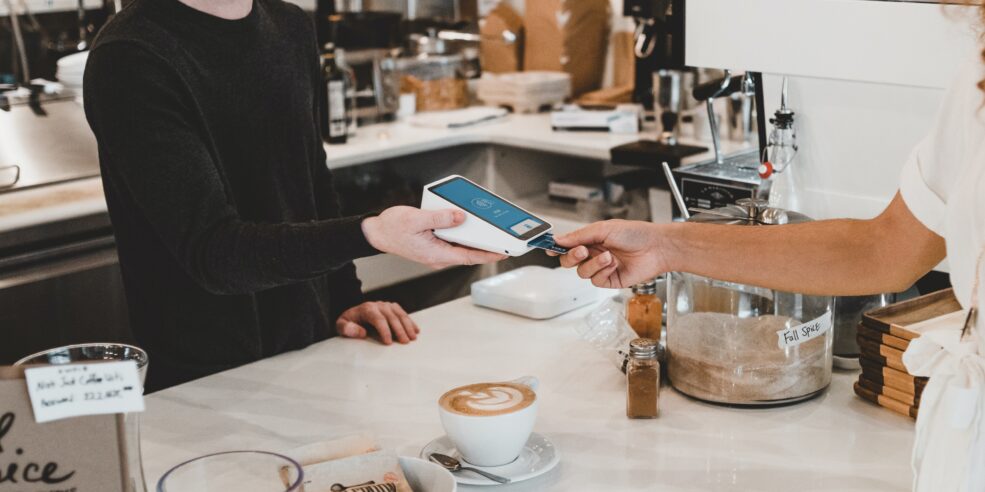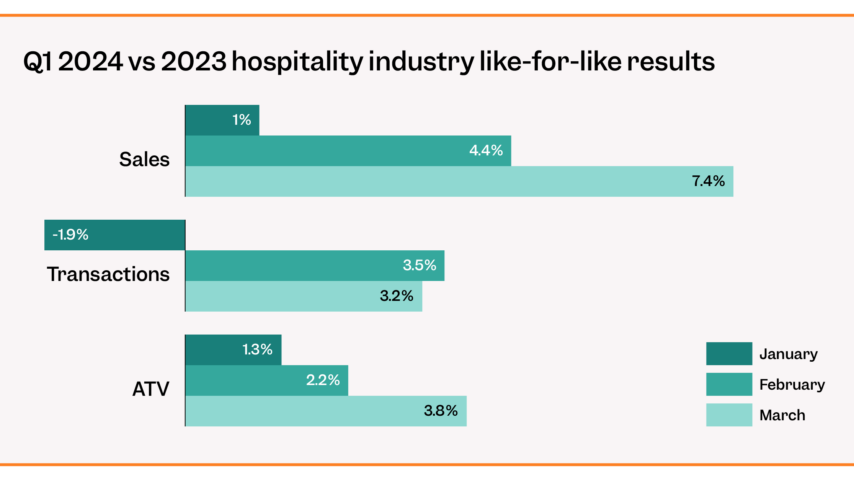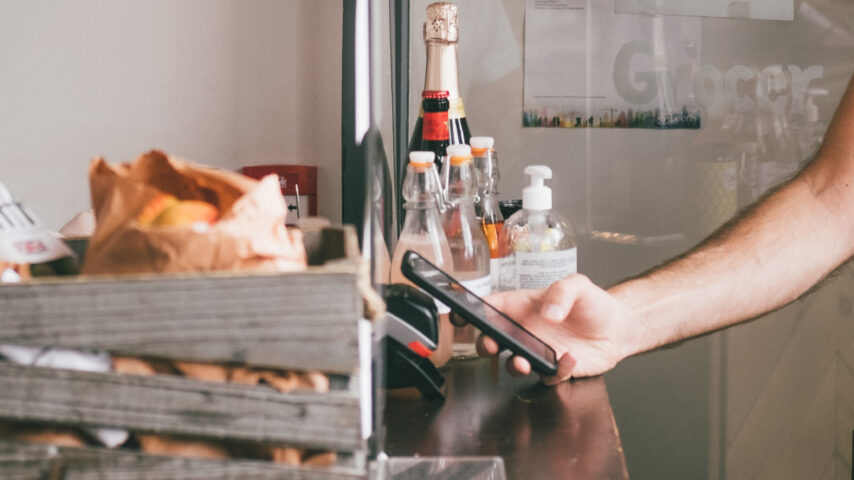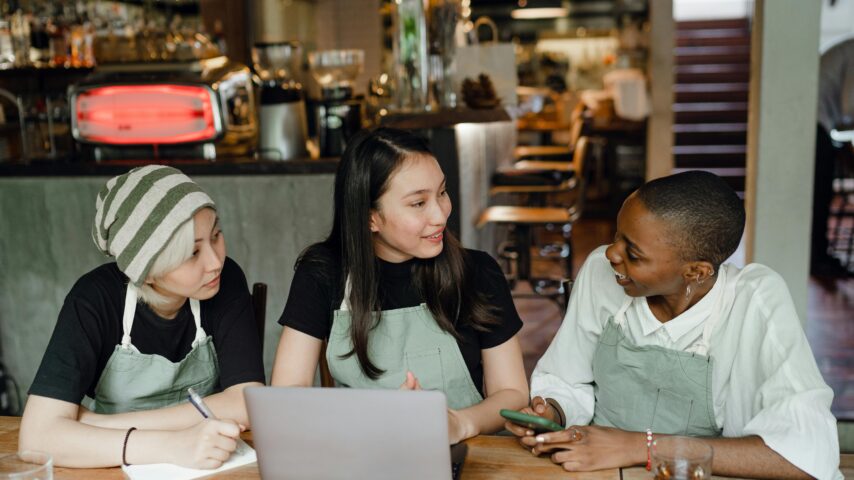Technology has taken off across all industries and restaurants are no exception. Growth within the technology sector is exponential, and COVID has shown how restaurants need to invest in it to boost their performance.
The vast amount of technology available to restaurateurs can make it overwhelming to know what tech stack to pick, especially with some technology more suited to some restaurants than others.
Despite the challenges, setting up the right tech stack from the start is essential. Making sure you’re future-proof means understanding where you want to go with your business, and picking a tech stack that has scalability.
Easy-to-use systems that slot into existing processes help keep a good culture in place: where decisions are data-driven and employees aren’t frustrated with administrative tasks or poorly functioning technology.
When considering technology for your restaurant it’s important to consider the needs of your customers and employees. Personal interaction is a big part of hospitality, and knowing where this is necessary for success in your restaurant is crucial.
One of the main things we want from any platform we work with is that it keeps the team on the floor looking after the customers and reduces the amount of office time. We’d much rather keep everyone focussed on the customer’ it was a huge help in ensuring that keeps happening. – James McLean, Founder at Truffle Hunting
Technology all restaurants should consider
Although some technology is more suited to the needs of particular types of restaurants, there are three technologies that all restaurant operators should consider – POS (Point of Sale), Inventory Management, and Labour Planning.
Some software providers offer an all-in-one solution to these three operational challenges, but we find best-of-breed solutions to be the best to get the best possible system for each. Each operational aspect of running a restaurant has become so complex due to the number of integrations required (delivery apps, loyalty programs, accounting, etc.) that a different tool is required to each to ensure full focus.
Point-of-sale systems
POS stands for a point-of-sale system: it is software for capturing transactions. Many of them function as more than a till; they provide an immediate transaction, an online ordering tool and a system to collect sales data.
Why is having a POS so important? On top of being the tool for financial transactions, and in many countries a legal necessity, it also;
- Keep track of employees’ performance. Knowing your top, and lowest, performing employees helps to bring everyone up to the same level with training.
- Manage trends in your Average Transaction Value (ATV). Understand the varying factors to manage the results – such as upselling.
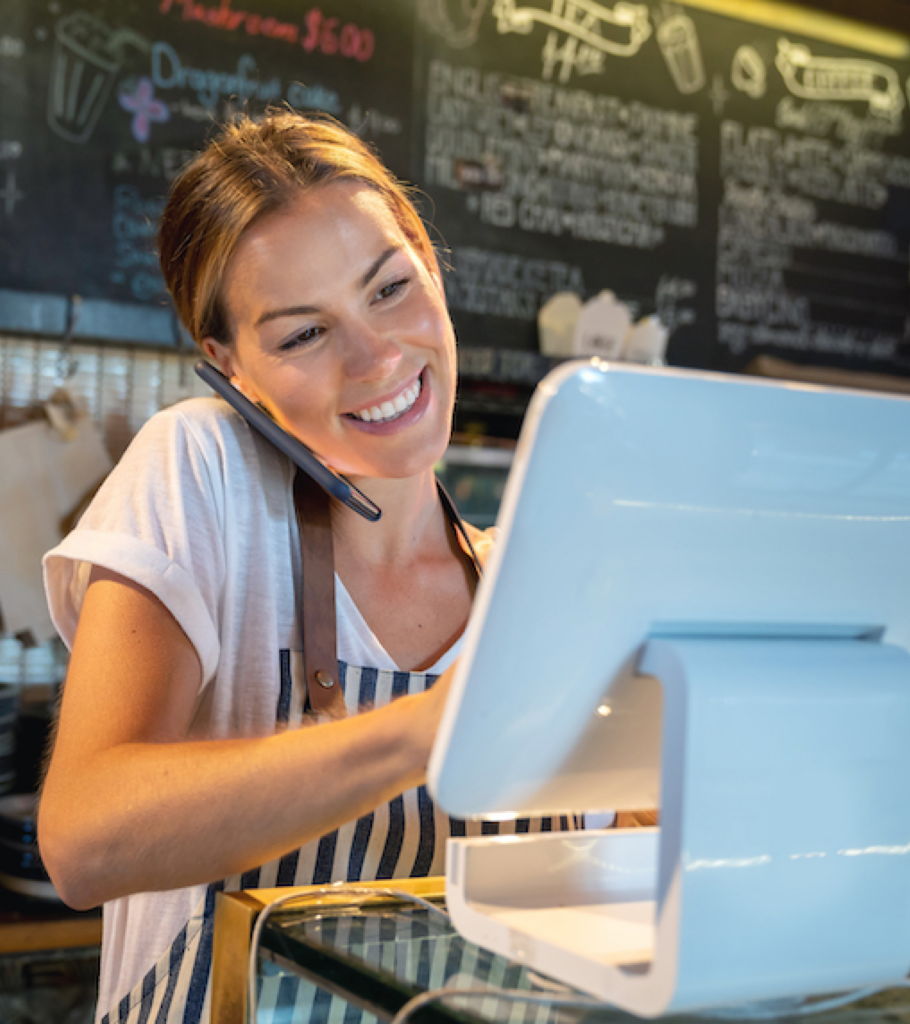
Inventory Management
Inventory Management tools are especially important for restaurants, as businesses with very perishable inventory. To run a restaurant effectively you need to minimise the gap between the theoretical and actual usage – inventory tools help to do this.
Poor inventory management results in loss of revenue as well as damage to the environment with increased food wastage. It’s important to choose the right inventory management tool to avoid this, plus it also gives you:
- Ordering technology to manage all inventory orders in one place. The ability to track when orders have been placed, their status and the invoices attached across multiple locations – so that you always have stock.
- Waste Management. Inputting your recipes allows you to track your waste, helping identify areas of improvement and reduce unaccounted-for items.
- Menu planning. Improve performance with practical recipe costing tools and data-led decisions on which menu items yield the most profit.
Labour Scheduling
Labour is consistently a hot topic within the hospitality industry. All types of restaurants struggle with the same challenges of a decreased employment pool, and difficulties keeping up with wage increases.
Labour planning, alongside the difficulties of recruiting new staff, means software that helps is vital in ensuring the success of your business. It can help to boost restaurant performance, alongside improving operations by:
- Reducing the impact of labour shortages. Simplify employee scheduling and deploy staff efficiently.
- Optimising labour costs. Staff according to demand and predicted sales, to maximise sales potential when busy and control costs during quiet periods.
- Improving team communications. One source of truth for scheduling and hours worked helps to improve team relationships and empower managers to improve operational organisation.
QSR – Quick Service Restaurants
Quick Service Restaurants, or QSRs, are focused on providing their customers with fast service. They typically have limited seating, a casual atmosphere and an inexpensive menu.
As with all restaurants; there are peaks at meal times – but QSRs’ consistent product and low price point mean they tend to be busy throughout the day, and throughout the night for some.
Pre-prepared and pre-packaged foods are a defining feature of QSRs, and most of it is taken away, so the service must be as fast as possible. This is helped by having a consistent menu, with the occasional promotional item.
Customers are looking for quick service primarily, so technology that provides this for them, and improves operational efficiency is vital. There is less of a requirement for face-to-face interactions, so technology can operate in the place of servers.
Kiosk Ordering
Kiosk ordering is a perfect tool for QSRs to control costs and boost sales. This technology involves digitalising your menu and ordering channels to enable customers to process their orders.
The hardware can also link with other tools such as POS to ensure operations run smoothly – they have several benefits:
- Improving ATV (Average Transaction Value). Lack of ‘shame’ associated with overordering when a person takes someone’s order, increases the likelihood of larger orders.
- Increased orders. Queues are lower and therefore capacity for orders may increase, up to the point that the kitchen can handle them.
- Better labour deployment thanks to the lower number of FOH staff needed to take orders if the restaurant moves fully to the kiosk system.
Digital Menu Boards
Digital Menu Boards are cloud-based digital menus, normally displayed behind the point-of-sale, in addition to kiosks or traditional long-paper form menus.
This hardware should be completely user-friendly, customisable and functional. For most parts, they are a very straightforward tool to see improvements in performance from:
- Boosting marketing strategies. Promotional menu items can get increased exposure and results are seen faster.
- Reducing waiting time at the till. People are encouraged to make decisions from further away or typically are driven to order what they see.
- Increasing ATV. Upselling can be made easier, and reducing human push, by tailoring the digital menu to whatever is selling well in that period. People are also 30% more likely to order more when they see pictures of the food.
Example QSR: Neat Burger.
Casual Dining
Casual Dining maintains the QSR’s relaxed atmosphere but has much more of an emphasis on in-restaurant dining. They have table service and relatively large simple menus.
They usually cater to families who might make multiple visits so loyalty apps are well-suited to them. The rushes of service are more acute during traditional meal times.
With the increased service element, labour shortages are felt more here than in QSRs. Due to the family style of restaurants, they tend to be very busy with a large number of covers. Finding areas to cut down on labour costs can be tricky as a result.
QR Codes
QR codes can be used in casual dining restaurants to view the menu, order, and pay, but consider the level of service you want to give your customers when thinking about what you want to automate with technology. You can always choose to use the QR for the payment piece, but keep paper menus and ordering through a server.
These are straightforward to set up and use for consumers. Examples include Mr Yum and Store Kit. The benefits seen by restaurants can include;
- Fully customisable menu. Promotional items can be added to the menu at short notice, and missing items can be taken away to reduce customer disappointment.
- Controlling costs. Labour costs can be reduced as less of a need for FOH (Front of House) staff to tend to customers. Upselling can be driven through technology rather than face-to-face interactions.
- Reducing time per cover. Allowing for QR payments means customers can pay whenever they’re ready to leave, improving customer experience from reduced wait time and reducing the time between seatings.
- A deeper understanding of consumers. Customers often pay separately with QR codes, as opposed to one big group payment, allowing for a more accurate understanding of ATV and SPH (spend per head).
Robot Servers
Actual robots are programmed to deliver food from the kitchen to customers’ tables. They’re spatially aware and know to avoid people and objects in the restaurants, whilst delivering food.
This is a relatively new concept that few restaurants have onboarded, but the advantages of using them for casual dining restaurants could be huge:
- Alleviate the impact of labour shortages, and reduce labour costs. Robots can lower the requirements for runners and they deliver orders with 99.99% accuracy.
- Reducing customer wait time. The robots have a much larger capacity than humans so can take multiple orders out simultaneously.
It’s important to note that due to these being relatively new, they could cause some issues. The lack of face-to-face interactions could reduce customer satisfaction. The decreased speed in wait time is dependent on the kitchen being able to produce food at a higher rate, so may require more kitchen staff.
Loyalty Apps
These apps are designed to give rewards or discounts in exchange for customer data. Loyalty apps, alongside the family atmosphere and prices, further encourage repeat customers.
Loyalty could be rewarded through discounts or free items, based on purchase amount or a subscription-based loyalty program. Advertising on other platforms can boost success and help improve these results;
- Increased revenue. Rewarding customers with free items, if a certain amount is spent, will encourage repeat purchases of promotional items, and repeat customer visits, and as a result, increases ATV.
- Boost Customers’ lifetime value. Increasing engagement helps to drive increased revenue over a long period. It can cost 5 times more to acquire new customers than retain existing ones.
- Marketing strategy. Personalised marketing can be rolled out as a result of purchased and personal information input to receive rewards.
Example Casual Dining: Vapiano’s
- POS, Lightspeed
- Labour, Planday
- Inventory, Marketman
- QR Codes, Mr Yum
Another Casual Dining Example: Fat Hippo
- POS, Lightspeed
- Labour, Planday,
- Inventory, Marketman
- Loyalty Platform, 5loyalty
Fine Dining
Fine dining restaurants are some of the most high-end forms of hospitality. People tend to visit them on special occasions and expect a high level of service; it is all about the experience.
Often they open for lunch and dinner services, but peak during the evening. Menus are complicated, with preparation all happening on-site, with top-quality ingredients ordered from speciality suppliers.
Food Ordering Platforms
Apps such as Rekki cater to fine-dining restaurants that need to order specialised ingredients from multiple suppliers. They offer a safe platform to access, order and pay for goods online, with suppliers and restaurants both needing verification to use.
Apps like these are changing the game for restaurants that previously spent hours phoning suppliers individually. They help by:
- Improving inventory management. Keeping track of previous orders helps manage the burn-through rate of stock easily. Ordering is made easy and fast.
- Access to new suppliers. New ingredients and specialised suppliers are more accessible and can help broaden the menu.
- Reducing admin for kitchen staff. All payments are processed online, and flexible payment schemes and easily accessible invoices make keeping on top of it easy for chefs.
Reservation Platforms
These platforms allow customers to make reservations online and for restaurants to take a deposit or card number to charge in case of no-shows.
Although this is important for all restaurants to have access to, the increased costs of labour and inventory at fine dining establishments make effective reservation tracking vital.
- Reduces food waste. Preparation of food is done throughout the day, and knowing definitively how many covers you’ll have decreases the likelihood of wastage.
- Labour planning is improved. This accurate forecasting means knowing how busy a service will be and makes labour deployment based on sales easy.
- Improved financial security. Taking a deposit helps to cover the cost of labour and inventory, and the missed revenue, from customers not turning up.
Food Hygiene Apps
Generally, fine dining restaurants are small independent businesses that don’t have a head office with lots of admin staff; the restaurant management team have to do it all.
Busy kitchens and long shifts can mean that compliance with the strict health and safety regimes associated with restaurants can be forgotten about, so reminders are always helpful.
Food hygiene apps help remind and encourage all the necessary measurements and checks to comply with HACCP (Hazard Analysis Critcial Control Point) guidelines. This can have massive advantages for the business such as:
- Maintaining proper health and safety. Reminders given to staff at the correct times help to ensure that all measurements have been taken and your business complies with the laws.
- Keeping on top of audits. Paper trails of old measurements can be hard to follow, but online apps make it easy for auditors.
- Reducing food waste. Malfunctioning equipment is quickly noticed and avoids food spoiling prematurely due to poor conditions, or wastage due to poor inventory management.
Example Fine Dining Restaurant; AKA Restaurants
- POS, Lightspeed
- Inventory, MarketMan
- Labour, Planday
- Reservations, Sevenrooms
Pubs
Pubs are a large part of the hospitality industry in the UK and globally. They primarily focus on selling drinks (wet-led pubs), but the majority also sell food. Some pubs, typically gastropubs, are also food-led.
Typically, the kitchens in pubs are very small. The menu is basic and the food is normally pre-prepared and easy to cook.
Pubs are generally quite traditional, with many of the customers wanting this experience to continue. This can make introducing technology difficult, but it doesn’t mean operations can’t be made smoother with technologies that don’t affect the customer experience.
Solar Panels
COVID and inflation have had a significant impact on pubs. These reduced profit margins have resulted in 150 pubs closing this year. One cost pubs have had to contend with is the soaring price of energy. Solar panels help to mitigate the massively increased energy costs, on average around £18,400 annually, but supply the business with sustainable, free energy (beyond the initial start-up cost).
Some more modern solar panels, such as Solar Edge, are equipped with real-time data tools allowing you to manage your consumption.
Although they can be expensive to set up, the benefits are worth it:
- Saving costs on energy. Immediate reduction in costs due to energy being supplied from sustainable sources. Inn Cornwall reported savings of 19%.
- Reducing energy consumption. Access to real-time data on energy consumption empowers operators to pinpoint high-consuming products and work on reducing the run time of these.
Tipping Apps
COVID brought about several changes within the hospitality industry, and globally. One of the biggest changes has been the adaptation to cashlessness.
As customers are regularly encouraged to pay with cards now, fewer and fewer carry cash. This has resulted in industries, like hospitality, where the staff rely heavily on tipping, suffering.
This is particularly prevalent for pubs as they typically do not charge service charge and rely solely on cash tips.
Online tipping platforms allow customers to give teams cashless tips easily by providing a scannable QR code where you can then input a custom amount. Benefits include:
- Staff incentivised to provide hospitality. Customers rewarding staff with tips helps to boost productivity and create a positive working environment where employees want to please the customers.
- Improves employee morale and teamwork. Team members will be encouraged to help each other improve service and be more satisfied with the working environment as a result.
Example Pub, East London Pub Co.
Cafes
Cafes generally have a relaxed atmosphere with a daytime focus. Busy periods are usually during breakfast and lunch but customers continue to come in throughout the day.
A simple menu or pre-prepared food options are typical features of a cafe with a strong emphasis on hot drinks. Although table service can happen, food is often ordered at the till.
Since working from home became a common feature, cafes have seen an increase in people sitting for long periods using their wifi. Being able to take advantage of this is important.
Wifi Email Capture
Wifi Email Capture software works by collecting guests’ contact information when they try to use the wifi. The contact information collected is up to the consumer.
As mentioned above, working in cafes is incredibly common. Using email capture software allows you to benefit from supplying users with wifi:
- Customer mapping. Being able to select which information customers put in allows you to develop a good understanding of your customer base; altering the business and marketing strategies to build on this.
- Increased marketing contacts. Getting marketing contacts organically as a restaurant can be tricky, but using wifi capture helps to build up a big list of marketing targets whilst following GDPR.
- Increasing sales. With improved marketing contacts and an improved marketing strategy based on your target market, increased sales will likely follow.
Advanced Ordering Platforms
Although some people like to sit for extended periods in cafes, others are simply looking for a quick coffee.
Advanced ordering platforms or apps allow customers to pre-order drinks or food for them to collect at a specific time. They can choose their order from a digital menu, similar to kiosks, with optional extras being possible.
This can help cafes to boost performance through:
- Improving customer experience. Being able to order online allows for the queue at the till to be much smaller, and also for the experience for those ordering online to be very efficient.
- Preparing for busy periods. Staff can see when a busy period is going to happen a bit further in advance, allowing them to check their stock and prepare before the orders need to be ready.
- Reduced labour costs. Instead of having two people working behind the counter, cafes could only have one, to make the drinks, and encourage customers to order online pre-arrival.
Example Cafe; Chestnut Bakery
- POS, Lightspeed
- Inventory, Marketman
- Labour, Harri
- Email Capture Tool, Captive Wifi
Dark Kitchens
Dark kitchens are also known as cloud kitchens or virtual brands. They are online brands that exist only on delivery apps or online platforms.
These can sometimes be part of larger restaurants with extra capacity, or completely virtual brands that have multiple businesses operating out of the same kitchen. Some companies also use their primary restaurant as a centralised kitchen and send food to be finished in virtual locations further away to increase profit potential thanks to a larger delivery area.
The fundamental nature of virtual restaurants is that they’re built on technology, so introducing new technologies shouldn’t be too alarming. Often, speed of service and accuracy are crucial aspects of success for virtual restaurants, so technology facilitating this is most important.
Delivery App Integration Software
Virtual brands can receive orders from multiple delivery apps at the same time.
However, delivery apps don’t directly send orders to POS systems, instead, they issue a tablet per brand and per app. This can lead to a huge number of tablets each accepting orders, making tracking and preparing extremely difficult for the kitchens.
Software that seamlessly integrates all delivery apps into one place can help restaurants succeed by:
- Tracking sales from all channels. Understanding where the highest number of orders are coming from helps to boost marketing efforts and allows you to optimise for the best-performing channels.
- Streamlining process. Removes administrative tasks and potential mistakes from manually transferring orders from tablets to POS.
- Improves performance on delivery apps. Can help to track the speed of orders which is a huge factor in how highly rated you are on the apps.
Online Kitchen Display Systems
These types of hardware are often connected to, and available from, POS suppliers. It is a digital system in the kitchen to display orders, as opposed to the traditional, printed ticket method.
Virtual restaurants tend to get incredibly busy with several orders coming through at the same time. Busy periods can be hard to manage, but display systems help to:
- Prioritise orders. Orders can be organised to come through colour coded so that kitchen staff know immediately which to prioritise.
- Keep on top of incoming orders. Orders come through in real-time, and due to digitisation, fewer orders are likely to be missed.
- Effectively manage the speed of orders. Staff can be alerted as to how long each menu item takes to prepare, increasing the speed of orders and improving ratings on delivery apps.
Example Dark Kitchen; Crepe Affaire
- POS, Lightspeed
- Integration app, Deliverect
Conclusion
The tech opportunities for restaurants are huge, and the tech offering is growing exponentially. This makes building the perfect tech stack for your restaurant confusing. It’s important to identify the specific needs of your restaurant and research software accordingly – there are consultants that can help to make this easier, such as Twice Baked!
Spending time and resources on finding the tech stack that suits your restaurant’s needs is essential in boosting restaurant performance. Getting on top of your data, and using it, in real time allows for huge improvements in operations.
It’s important to consider that implementing new technologies can be complex, and meet resistance from employees. Ensure that all users are onboarded properly and fully understand the benefits of using it to see the most improvement in performance.
